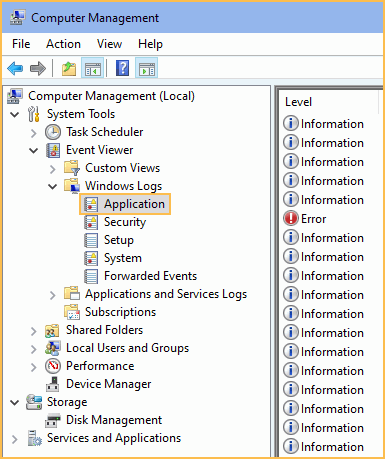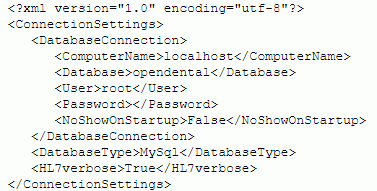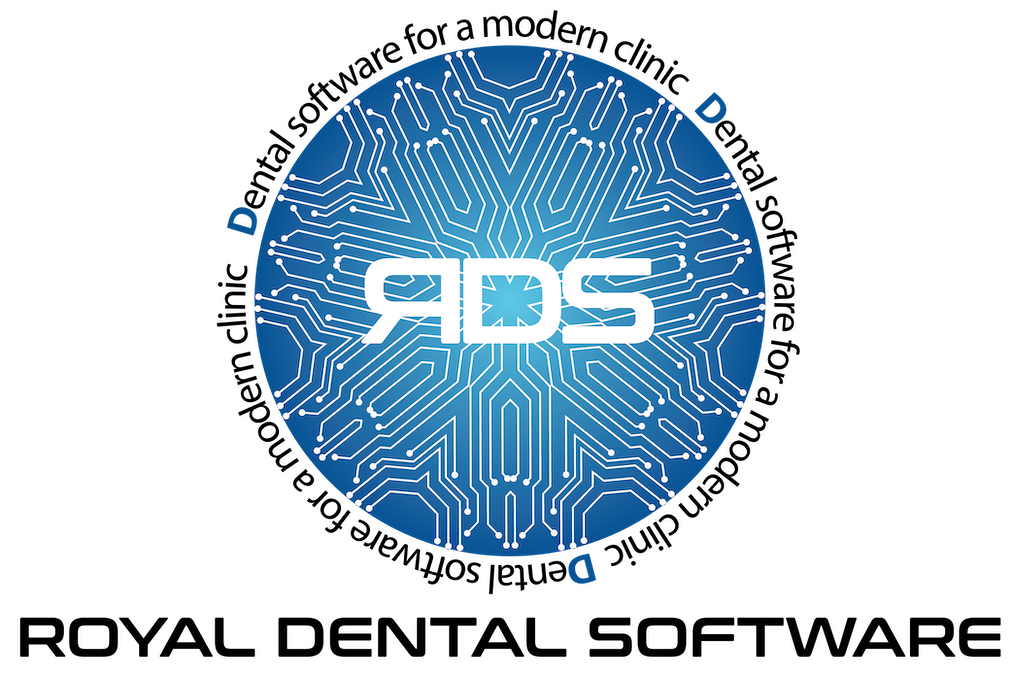Generic HL7
HL7 is the name of the file format that Royal dental Software uses to synch data with other medical software. Generic HL7 is an HL7 interface technology built into Royal dental Software. These interfaces can be customized to accommodate any software.
For the eClinicalWorks HL7 interface technology, see eClinicalWorks HL7 instead.
For LabCorp HL7, see LabCorp HL7.
Messages are used to pass information between Royal dental Software and the other medical software. There are two options for this:
- Shared Folders: The Royal dental Software server will have two shared folders that will be used to pass files back and forth.
- TCP/IP: A TCP/IP connection will be used to pass files back and forth.
A service (program without a user interface) called RoyalDentalHL7 will need to be installed on the server. It will handle the interaction between the HL7 messages and Royal dental Software database.
Royal dental Software HL7 Interface Specifications (PDF)
Updating Royal dental Software Versions
We recommend contacting Royal dental Software Support for assistance with an update.
Setup Steps
- Make sure the client Royal dental Software program is installed on the server the same as it would be on any other workstation.
- In the Main Menu, click Setup, Advanced Setup, HL7. Enable and setup the HL7 message structure. See Generic HL7 Message Structure.
- Connect to the Database: The information for connecting to the database is in the FreeDentalConfig.xml file in the application folder. This is the same file that the main Royal dental Software program uses to connect to the database. The information in the file must be accurate before starting the RoyalDentalHL7 service. One way to ensure the accuracy is to start the Royal dental Software client program.
- On the Choose Database window, set the database connection information. Only simple direct database connections are supported. Uncheck Do not show this window on startup so this window will show the next time a users launches Royal dental Software from the workstation, then close the window. If Royal dental Software is run as an administrator (right-click, Run as Administrator when launching Royal dental Software), connection information will auto-save to the FreeDentalConfig.xml file.
- Verify that the information saved correctly by re-launching Royal dental Software. If the information is correct, users can be sure that RoyalDentalHL7 will connect to the correct database when the service is started.
- Set up the HL7 Synch Folders (incoming and outgoing). For Generic HL7 this can be entered on the HL7 Def Edit window. Offices will most likely set up the folders from the server, so the paths will be relative to the machine user is on. However, be aware the setup window is viewable from other computers, so from other computers the paths will be invalid.
- Create a service to send and receive HL7 messages in the Royal dental Software Service Manager. If there are multiple database for multiple customers hosted on one server, then multiple HL7 services, each with unique names, must be setup. Then, each database must be set up to match with a differently named HL7 service.
Errors: If the service does not start as expected:
- Verify that the database and HL7 folders are correct (steps 2 and 3).
- The service will not start if the version is not exactly the same as the version of the main Royal dental Software program.
- If it still won't start, use the Computer Management tool: My Computer, right-click, Manage. Expand System Tools, Event Viewer, Windows Logs. Click on Application. The error and information entries will help determine the reason why the RoyalDentalHL7 will not start.

Troubleshooting
Simple Troubleshooting: If the messages are not being passed to OD and processed as expected, follow the steps below.
- Stop the RoyalDentalHL7 service.
- Edit the FreeDentalConfig.xml file by adding a line for <HL7verbose>True</HL7verbose>.

- Start the service.
- In the other medical software, trigger outbound messages.
- Wait about 10 seconds for the message to be processed.
- Look in the Windows Event Viewer Application Log as described in Setup step 5, item 3 above, refreshing as needed. Verify that the information was processed by Royal dental Software. Both kinds of messages should result in an insert or update to the patient table. If the message is for a new appointment, the result should also be an insert or update of the appointment table.
- After troubleshooting, remove the <HL7verbose>True</HL7verbose> line from the xml file. The line will usually be removed automatically when the user clicks OK from the Choose Database window.
Complex Troubleshooting: First perform the Simple Troubleshooting steps above. If that does not solve the problem, follow the steps below.
- Turn off the RoyalDentalHL7 service.
- Locate the incoming and outgoing folder paths as set on the HL7 Def Edit window.
- Open the outgoing folder in Windows.
- In the other medical software, trigger outbound messages.
- Look for the message in the outgoing folder. Users may need to wait up to 60 seconds for the message to appear.
- If it does not appear, the other software is not properly creating files.
- If it does appear, make a copy of the message for later analysis.
- Start RoyalDentalHL7.
- If the original message does not disappear, then there is a problem with RoyalDentalHL7. Look in the Windows Log for errors with the message processing.
- If the message still does not seem to have been processed, then it will need to be debugged. A copy of the message, and possibly the database itself, should be sent to Royal dental Software programmers for testing.
Also see HL7 Unit Tests.


